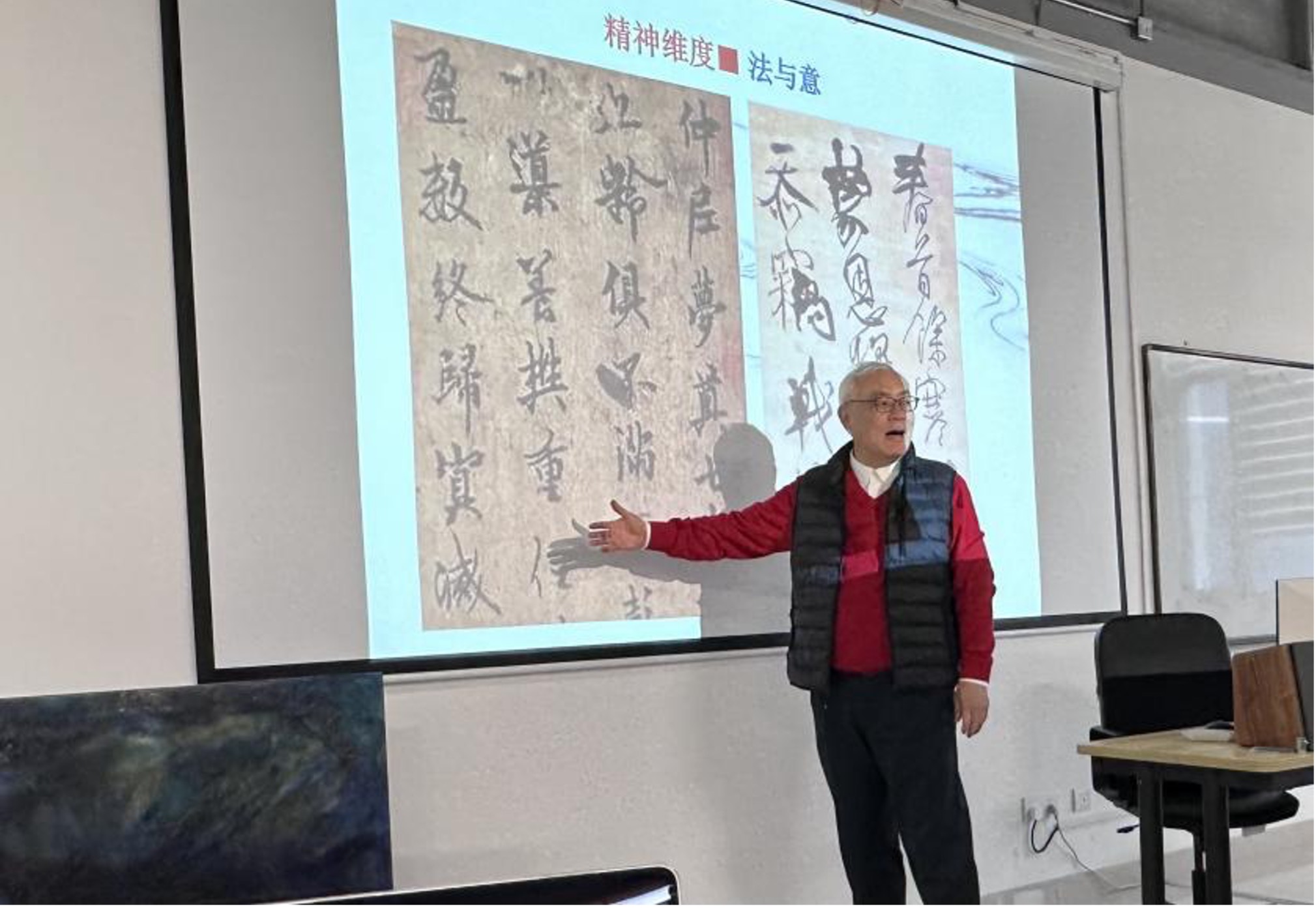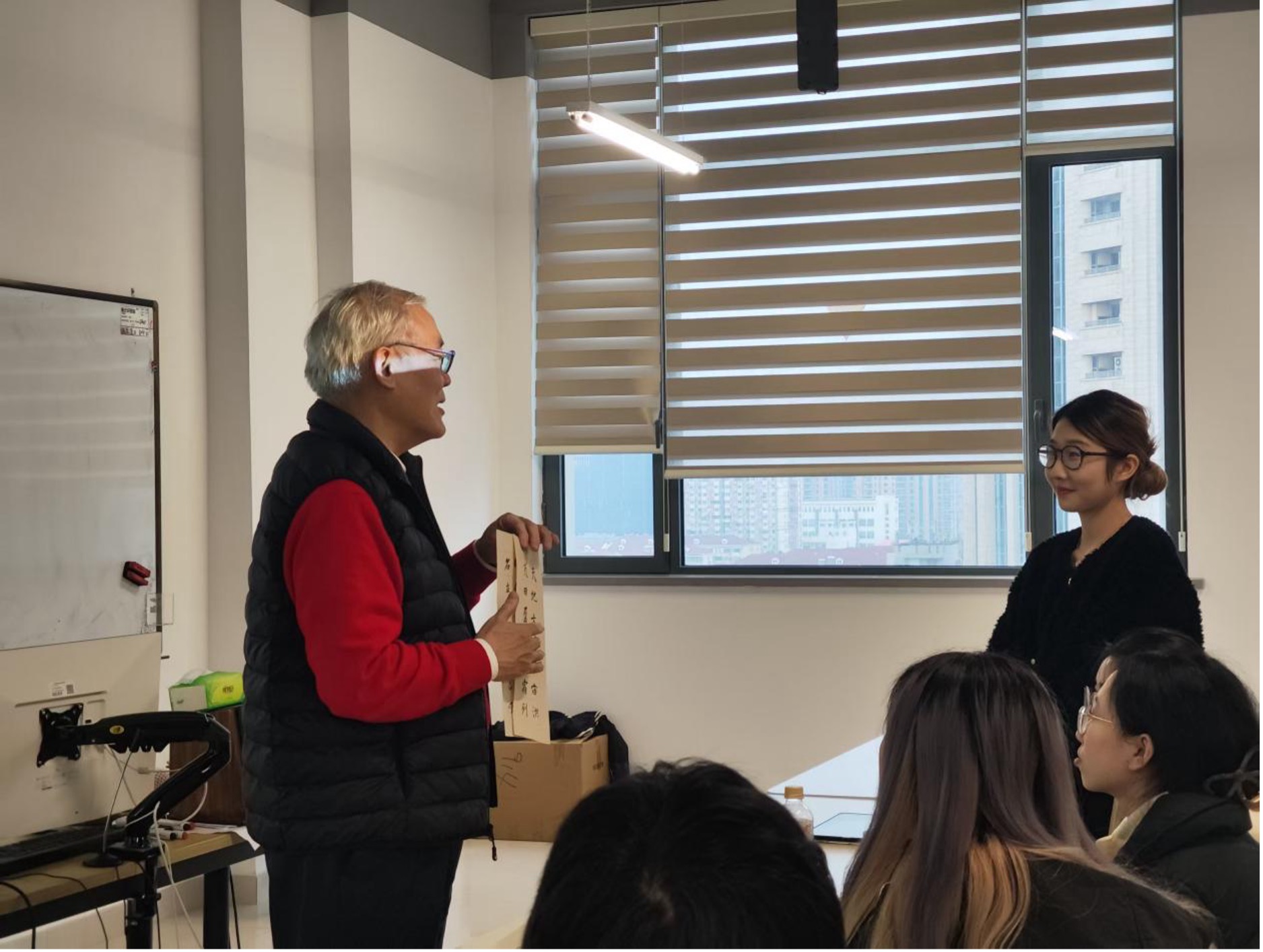On 18 December, the International Institute of Creative Design (IICD) invited Professor Zhou Bin from the School of Humanities, Shanghai Jiao Tong University, to deliver an enlightening lecture titled Appreciation of Chinese Calligraphy and Aesthetic Education.
Professor Zhou Bin is a doctoral supervisor specialising in the cross-cultural psychology of Chinese calligraphy, and serves as Director of the Institute for International Communication of Chinese Calligraphy Culture. He is also President of the International Calligraphers Association (a United Nations NGO), a member of the Chinese Calligraphy Education Steering Committee under the Ministry of Education, a council member of the International Confucian Association and the China Cultural Development Promotion Association, Chairman of the Shanghai Folklore Culture Society, and Executive Director of the Shanghai Calligraphers Association.

In his engaging lecture, Professor Zhou introduced the historical evolution of Chinese calligraphy, beginning with ancient oracle bone and bronze inscriptions, and progressing through clerical script (Lishu), regular script (Kaishu), running script (Xingshu), and cursive script (Caoshu). He vividly illustrated the gradual enrichment and maturity of calligraphic styles and techniques. Historically, Chinese aesthetic appreciation and expression have been realised and practised stroke by stroke through calligraphy. He described calligraphy as a melody without sound and a painting without colour, capturing the imagination and offering endless aesthetic enjoyment. Through concise explanations and carefully selected images, Professor Zhou guided participants through the historical transformations of calligraphy and methods for appreciating various calligraphic styles, systematically enhancing their aesthetic capabilities while unpacking the beauty of calligraphy.

The interactive session brought the lecture to a climax. Professor Zhou invited several students from the audience onto the stage to analyse and appreciate calligraphic works. Using his own creations and classical historical examples, he provided insightful commentary and interpretations, sharing the artistic secrets behind each work. This session greatly benefited both students and faculty, igniting their interest and enthusiasm for calligraphic art.
This lecture not only enhanced the participants' ability to appreciate calligraphy but also deepened their understanding and identification with traditional Chinese culture. After the event, many students expressed their intention to integrate calligraphy into their daily studies and life as part of their personal cultural cultivation. The Institute will continue to promote and deepen education in China's outstanding traditional culture, contributing to building a harmonious and culturally enriched campus environment.




